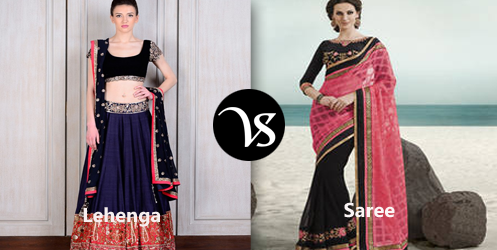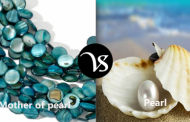 Lehenga:
Lehenga:
Lehenga is an outfit made up of lower part called Lehenga and upper part called choli and a third part of complete outfit called dupatta. It can be very expensive.
Saree:
A saree is a long strip unstitched cloth which is four to nine meters in length and wrapped around the waist with one end then draped over the shoulder baring the midriff. It is worn over a petticoat.
Differences:
| Basis | Lehenga | Saree |
|---|---|---|
| Definition (www.oxforddictionaries.com) |
A full ankle-length skirt worn by Indian women, usually on formal or ceremonial occasions. | A garment consisting of a length of cotton or silk elaborately draped around the body, traditionally worn by women from South Asia. |
| Types | Its types are:
|
Its types are:
|
| History | Indian Lehenga choli is the staple Indian attire. Its history and origin is as interesting as the outfit. It has travelled a long way to reach where it is today. Initially it was considered as the royal Indian attire. During the Mughal era, this was worn by every woman. | In the history of Indian clothing the sari is traced back to the Indus Valley Civilisation, which flourished during 2800–1800 BC around the western part of the Indian subcontinent. Cotton was first cultivated and woven in Indian subcontinent around 5th millinim BC. |
| Word origin | The word lehenga was originated from Punjabi lehnga. | The word saree was originated from Late 18th century: from Hindi sāṛī. |
| Pronunciation |
|
|
| Advantages/Benefits | Its advantages are:
|
Its advantages are:
|
| Example in Sentence |
|
|





